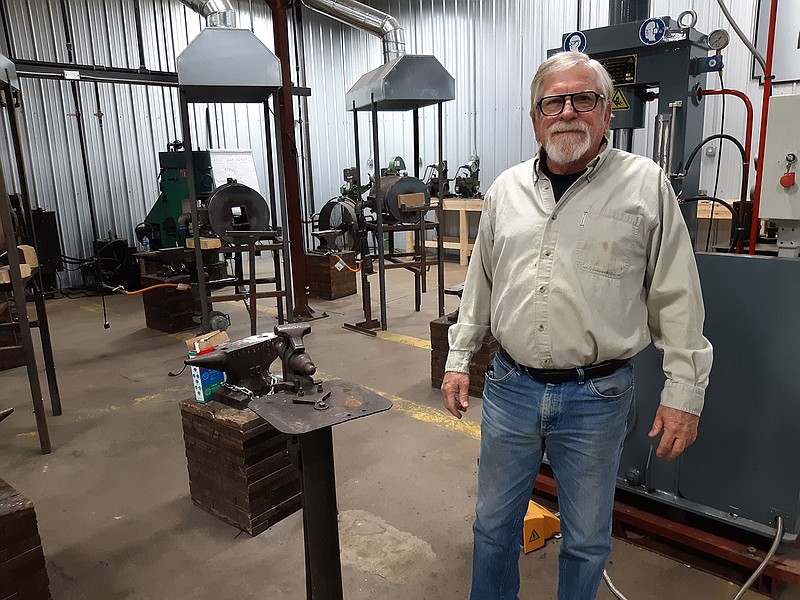TEXARKANA, Texas - The Bill Moran School of Bladesmithing continues a proud tradition of preserving an ancient skill that humans have practiced for many centuries.
However, this program is much newer, having originated more than 30 years ago through the support of Texarkana College officials.
"We are here to promote and continue the art of the forged blade, the way it has been done most of the history blades have been made," said Don McIntosh, coordinator of the school, which is located on the Texarkana College campus.
Modern factories produce knives by a method called "stock removal," which is a mass production approach involving stamping metal.
"Bill Moran rekindled the interest and skills in the forged blade, which for a long time was becoming a lost art," McIntosh said. "This began in the early 70s. He and three partners started the American Bladesmithing Society in 1976. The word 'bladesmithing' did not really exist. Most people prior to that were considered blacksmiths with a particular speciality."
In 1988, in partnership with Texarkana College, the American Bladesmithing Society started the first modern school dedicated to bladesmithing, certainly in America, possibly the world.
"B.R. Hughes, another of the four bladesmithing school founders, was dean of students at Texarkana College," he said. "They also got Cheesie Nelson, TC president at the time, to support the program. James Powell, head of Continuing Education at TC, was also a major supporter and promoter of the program."
The bladesmithing school teaches a wide range of skills at various levels, including forging and assembling components into fully functional blades. This skill is even used professionally by many in the modern world.
"Lots of people actually do this for a living," he said. "In a world of machine-punched cutlery, there are people who are taking this ancient skill and keeping it alive while making a good living at it.
"There are qualities that come out of this technique that machine methods can't duplicate. A machine can stamp from a piece of metal, but they can't replicate the delicate techniques used by a skilled forger. Factory treating is generic.
"In traditional bladesmithing, it is customized to the needs of each individual blade. A high-quality forged blade can fetch thousands. No factory is going to duplicate that. Further, artisan blades have an army of collectors supporting the art. Hobbyists aren't only interested in antiques, but modern artisan knives. Some artisan produced duplicates of unique items like King Tut's dagger went for millions on the market."
The Bill Moran School of Bladesmithing trains students from all over the world.
"They come here because of Bill Moran's reputation as well as this school," he said. "And they come for the level of training provided. All classes are taught by ABS Master Smiths and have been since the school started. And most of those Master Smiths achieved that through this school."
Students start as apprentices, a phase which lasts for at least three years. After they achieve Journeyman upon the conclusion of a series of tests, the journey to Master Smith awaits them.
"Gaining their skills through this school can take time off the years needed to achieve Master Smith," McIntosh said.
Once achieving Master Smith, students are eligible to join the teaching staff of the school.
"The people who show up to our school often have a background of trying to do this practice," he said. "They find out the art is much more involved but their prior knowledge often shortens the learning curve they might have otherwise had to overcome. Plus, they learn a lot more coming through this school."

